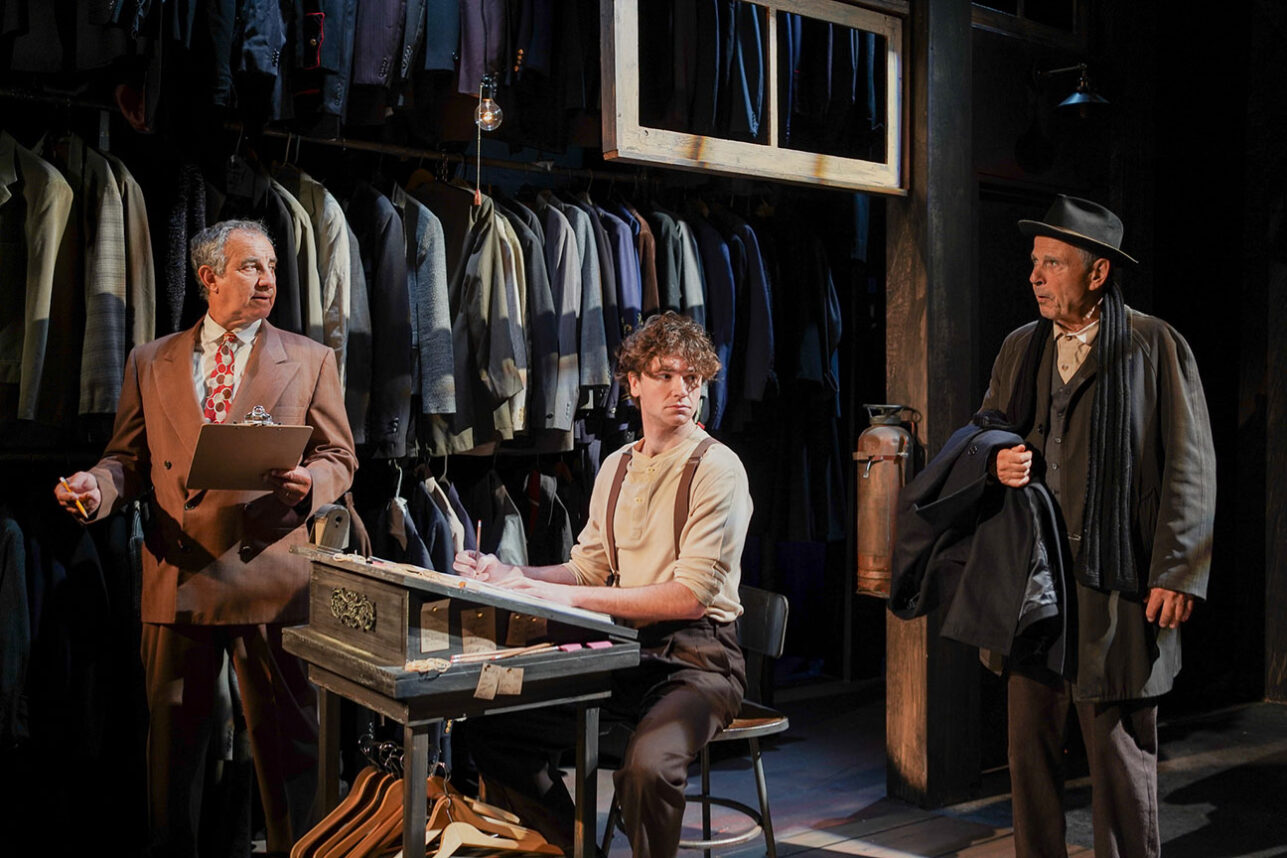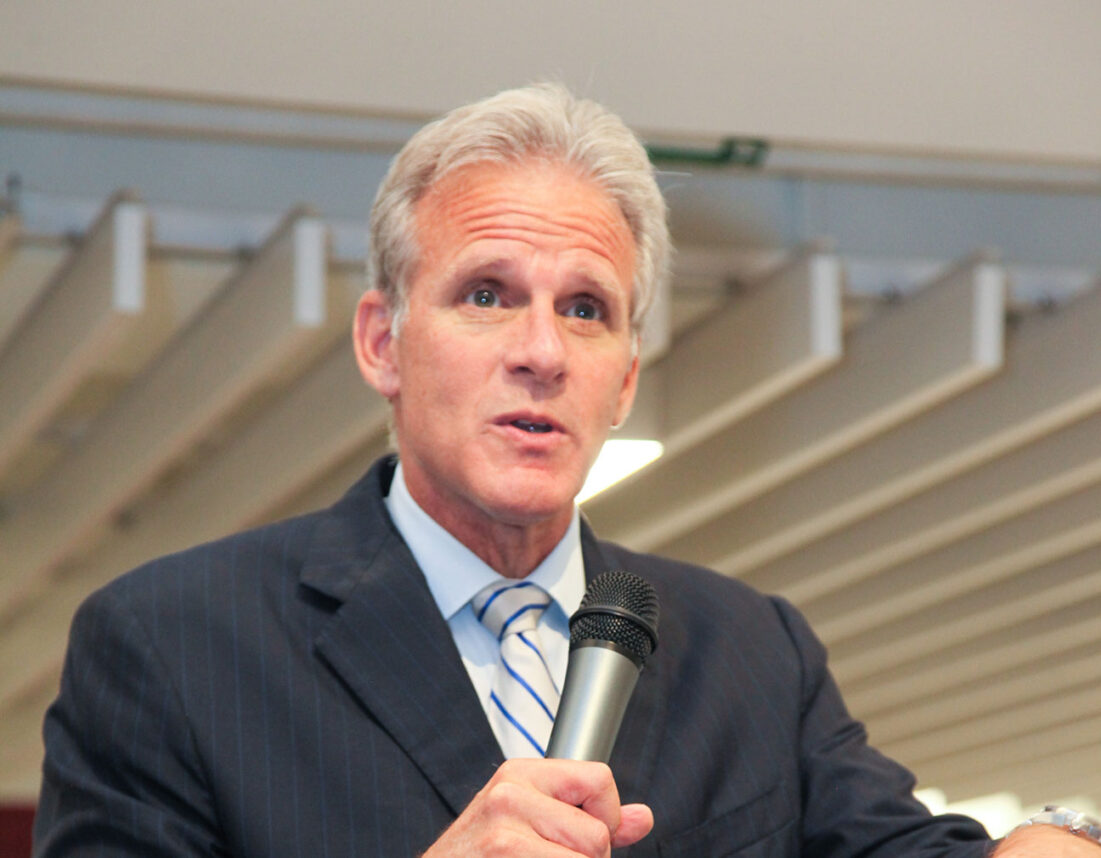The Metropolitan Transportation Authority (MTA) plans to construct a grotesquely invasive “Bus Rapid Transit” corridor (the term is MTA’s) along Chandler Boulevard in the East San Fernando Valley, and MTA’s 300-page-plus environmental impact report (EIR) deceives the public in its effort to whitewash the plan. As one salient example of deceit, the EIR disingenuously tries to hide the rapid- transit’s impact on community safety, conceding the possibility of increased “pedestrian/bus conflicts.”
Where I come from in Brooklyn, we called that “getting run over by the bus.” Newspapers call it “bus injuries and bus accidents.” But the MTA covers up the true impending dangers to life and limb by warning of “pedestrian/bus conflicts.”
And so the deception continues. Although the MTA spends $10 million a year to repair graffiti damage that its properties attract, the EIR does not discuss the graffiti impact of constructing several miles of 4-foot-tall white picket fences along Chandler Boulevard.
MTA property attracts spray paint, and spray cans near temples paint swastikas. Graffiti 101.
The EIR concedes that MTA could build a reduced segment of its intended bus line in the Van Nuys commercial area, beginning west of the affected communities, but it absurdly limits consideration of such an alternative line, arbitrarily truncating that option only a few blocks west across the 405 Freeway at Balboa Boulevard. Thus, the EIR utterly fails to discuss and analyze the impact of extending such an alternative all the way west to the desired terminus at the Woodland Hills transportation hub.
Such a reasonable alternative, augmented by a Transportation Systems Management (TSM) program to maximize efficiencies in present surface-transit operations between NoHo and Van Nuys, would achieve the vast majority of MTA’s mass-transit goals at much lower cost than entailed by running 460-480 rapid buses daily, smack through the heart of a residential community.
The EIR reflects the MTA’s cursory study of the people who live and walk in the neighborhood along Chandler. It ignores strong local opposition from Latinos, Asian Americans and African Americans who have saved their take-home pay for years to live in the integrated Chandler community in Valley Village.
It does acknowledge the presence of an Orthodox Jewish community. On Shabbos, thousands of people in the Chandler neighborhood — thousands — do our best to minimize our interaction with the world of hustle-bustle and transportation. Sure, there are cars driving by; that’s cool, and we knew that when we created an expansive community along Chandler over these past 10 years. But it is unconscionably invasive and repugnant to the neighborhood’s character to construct a Bus Rapid Transit line that the EIR promises will run, in one direction or the other, every minute or two along Chandler.
MTA apologists lie when they say that the rapid bus will run “only” once every 7-10 minutes; in truth, the EIR explicitly admits the plan to run buses every 2.5 minutes each way. And there is a good reason that MTA misleads; it knows that rapid 60-foot buses every minute or two truly are invasive.
In its greatest deception, the EIR falsely conveys that MTA seeks to “restore” public transportation as part of the neighborhood’s cultural “history.” But this is not about refurbishing James Madison’s Montpelier estate in Virginia or the Statue of Liberty. For the past 10 years, Chandler has been utterly devoid of mass transit. During those 10 years, the community has charted a dramatic new history.
The Shaarey Zedek congregation expanded dramatically on Chandler. The Toras Hashem Synagogue constructed a huge new building on Chandler. The Valley Torah High School moved from elsewhere to extraordinarily expansive quarters on Chandler. Emek Hebrew Academy practically doubled in size at its nursery and preschool on Chandler. The Chabad Shul underwent a complete renovation on Chandler. A new Sephardic Orthodox Synagogue is under construction on Chandler.
These past 10 years are real history. Regardless of whether a train ran on Chandler 100 years ago, it no longer runs, and it has not run there for 10 years. Horses once promenaded on Wilshire Boulevard, but no one will set aside a lane today for horses to walk past the Jewish Journal on Wilshire. And, even when a train did run in the old days, it ran only once a day. But MTA explicitly admits that it seeks to run as many as 480 buses daily in a comparatively narrow corridor that aligns a walking path and bike path, leaving inadequate swerve room for emergency safety maneuvers.
Finally, the absence of MTA Board members from the public hearings makes a mockery of the entire legal process enacted by the State Legislature and interpreted by the courts. Hundreds of community members have appeared at the public hearings to share their passions and concerns with their elected officials and the agency board, but they have been met with two MTA officers and a transcriber. The 13 MTA Board members cannot possibly understand from a transcript — assuming that they read the hundreds of pages of transcription — the passion of the words spoken at the hearings. Maybe that is the reason that the law calls for “hearings” — not “public transcribings.” One cannot discern from a transcript the tones, the quotation marks, the emphasis, or the passion of the spoken words.
Lives and dreams are at stake. And the sham is such a shame. The MTA has failed to comply with our State Supreme Court’s substantive standard for presenting a Draft EIR, and it has failed to comply with legal standards of procedural due process. A new and honest Draft EIR must be prepared to inform the public sufficiently so it can participate meaningfully in the decision-making process. And a new series of true hearings must be scheduled so that the public actually is heard by the 13 voting members of the MTA Board.





















 More news and opinions than at a Shabbat dinner, right in your inbox.
More news and opinions than at a Shabbat dinner, right in your inbox.